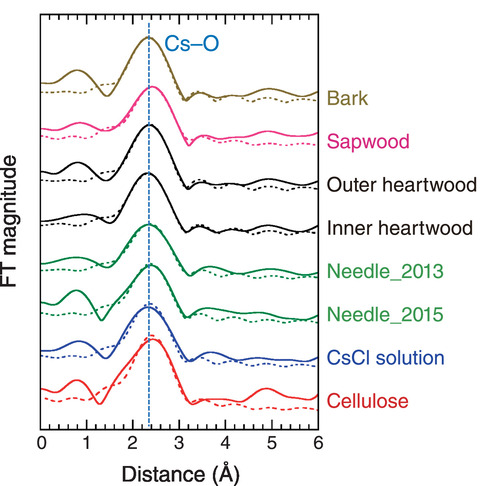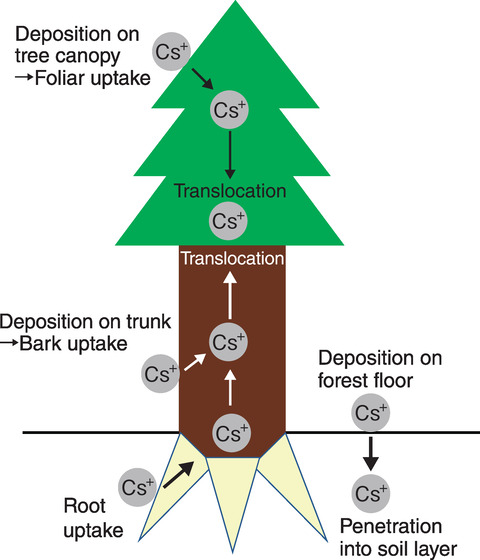
Fig.1-34 Analytical results of EXAFS spectra for C. japonica

Fig.1-35 Uptake and translocation of Cs inside tree body
Large amounts of radiocesium emitted by the accident at TEPCO's Fukushima Daiichi NPS (1F) were deposited across a wide land surface, including most of Fukushima Prefecture. Researchers have aimed to understand the behavior of 1F-derived radiocesium in forest systems because approximately 70% of Fukushima Prefecture is occupied by forests. It has been suggested that mobile 1F-derived radiocesium is translocated inside tree bodies over time. However, the chemical speciation of Cs in trees has not been well documented.
Therefore, we applied extended X-ray absorption fine structure (EXAFS) spectroscopy to speciate Cs in tree samples. Bark, sapwood, heartwood, and needle samples were collected from four tree species in Fukushima: Cryptomeria japonica (C. japonica), Pinus densiflora (P. densiflora), Quercus serrata (Q. serrata), and Eleutherococcus sciadophylloides (E. sciadophylloides). C. japonica and P. densiflora are representative evergreen conifers, whereas Q. serrata and E. sciadophylloides are broad-leaved deciduous trees. Each sample was ground into a powder and then mixed with an aqueous 133CsCl solution. The EXAFS spectra of the Cs-adsorbed samples were then obtained at a synchrotron facility.
The obtained Cs LⅢ-edge EXAFS spectra of Cs-adsorbed samples of C. japonica are shown in Fig.1-34. Similar spectra were obtained for the hydrated Cs+ ion (i.e., the aqueous CsCl solution) and each tree sample. The Cs-adsorbed tree and cellulose samples showed only the Cs-O shell, suggesting that hydrated Cs+ ions were electrostatically bound to negatively charged functional groups, such as carboxyl and phenolic hydroxyl groups, in components of tree tissues. Cs adsorption due to this so-called outer-sphere complex could decrease in the presence of competing cations. Considering the competing cations (e.g., K+, Ca2+) in sap and stemflow, Cs is not expected to strongly fix to tree tissues. The results of EXAFS analysis support the consensus among researchers that radiocesium is translocated inside tree bodies in a mobile form, as summarized in Fig.1-35.
Similar results were found for P. densiflora, Q. serrata, and E. sciadophylloides. It is assumed that the distribution of radiocesium is governed mainly by chemical and physiological properties. Overall, our work helped clarify the speciation of Cs in tree tissues. Further studies regarding the behavior of radiocesium in individual tree species and the resulting plant physiology would improve our understanding of the long-term radiocesium cycle in forest systems.
This work was supported by the Japan Society for the Promotion of Science (JSPS) KAKENHI Grant-in-Aid for Challenging Exploratory Research (No.JP15K12206).
(Kazuya Tanaka)